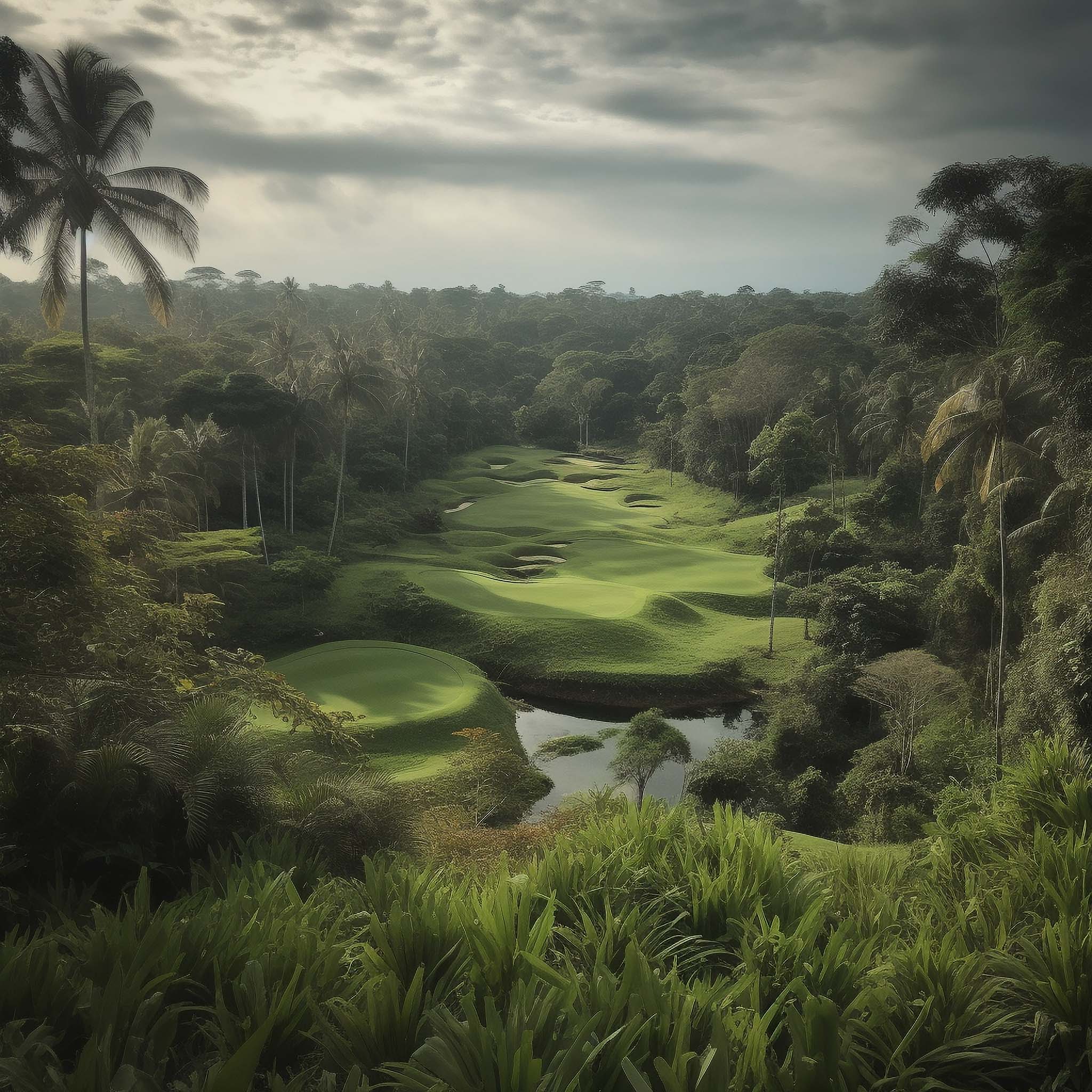PADI HILLS GOLF CLUB
LOMBOK, INDONESIA // 8.6510° S, 116.3249° E
PROMPT: /imagine: An 18 hole golf course located in the rice paddies of rural Lombok, Indonesia surrounded by lush rainforest. *
This was the shot that started a week-long (so-far) obsession with Midjourney AI and the stunning, almost photo-realistic images it can produce. I had dabbled with the technology a few months back, navigating the clunky discord forum-style user interface, but had been unable to get anything worth showing. But as with any rapidly evolving technology, it pays to persist and try to learn it’s mysterious ways, and after a couple of days of tinkering, it felt like I had hit the jackpot with this image. The level of detail in the topography and vegetation blew me away. I compared it to actual photographs of Lombok and could barely tell the difference. Except of course for the randomly assembled pieces of golf course that had been integrated quite brilliantly into the landscape. Whether or not the holes were actually playable, or if the routing was even vaguely accessible, it seemed like something people might want to see. I was gradually able to work up my hit rate of images that I considered ‘passable as real’ to around 1 in 10, and a ‘worthy of sharing’ to around 1 in 25.














































































































This page alone could be a standalone booklet of which I would love to have, and be first in line to buy. These are all absolutely beautiful and I love everything about this. Thank you so much.
Thanks Marquis. Unfortunately the current resolution that the AI generates is not high enough for print. It won’t be long until it is though, so do stay tuned!
Amazing. Stunning. Jaw dropping..
Wonderful article and interview..